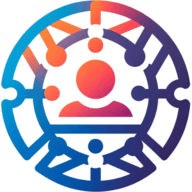4 Time Management Techniques for Managing Multiple Staffing Projects
Effective time management is crucial when juggling multiple staffing projects. This article presents expert-backed techniques to streamline your workflow and boost productivity. From time blocking to implementing visual command boards, these strategies will help you stay on top of your projects and maximize efficiency.
- Time Block for Focused Productivity
- Streamline Tasks with CRM Tools
- Implement Daily Triage Blocks
- Create Visual Command Board
Time Block for Focused Productivity
As a busy person, I need to optimize my time usage. I plan it using time blocking to allocate certain hours of the day to specific activities, including client contact, candidate filtering, and strategic thinking.
Grouping similar activities in sessions, as well as implementing focused sessions, is an effective method.
This approach helps because it minimizes context switching and enables more in-depth and productive work on priorities.

Streamline Tasks with CRM Tools
When you're juggling multiple client requests and candidate searches, the secret isn't working longer hours — it's working smarter. One time management technique that has transformed the way I operate is systematization through smart CRM and project management tools like Zoho CRM and Monday.com. These platforms allow me to capture every incoming brief and automatically organize them by priority, deadline, value, or job size. No more switching between sticky notes and spreadsheets — everything is streamlined in one place. It means I can instantly see what needs my attention first, keep track of progress across multiple workstreams, and ensure nothing slips through the cracks. In short, I spend less time managing the chaos and more time delivering results.

Implement Daily Triage Blocks
As the owner of an addiction treatment center, time management isn't just about staying organized—it's about protecting the quality of care. At Ridgeline Recovery, we're often juggling urgent client needs, staff schedules, compliance demands, and yes, the constant work of recruiting the right people to join our team. There's always something that feels immediate. But over the years, I've learned that urgency doesn't always equal importance—and that distinction has shaped how I manage my time.
One technique that's made the biggest impact is what I call "triage blocks." Every morning, I carve out a non-negotiable 30-minute window to review all incoming requests—whether it's from clients, clinicians, or candidates—and mentally sort them into three categories: urgent action, scheduled follow-up, or delegation. It sounds simple, but having that clarity first thing helps me stay responsive without being reactive.
For example, if a candidate inquiry comes in that isn't time-sensitive, it gets scheduled into a weekly hiring block—not squeezed in between crisis calls. If a team member needs immediate support with a high-risk client, that goes to the top. The goal is to create mental whitespace—to make fewer decisions on the fly and more with intention.
As a business owner in behavioral health, it's easy to feel like everything has to happen right now. But when you build systems that separate real emergencies from just noise, you give your best energy to what matters most. And in our line of work, that energy can mean the difference between someone falling through the cracks or finally getting the help they need.
Create Visual Command Board
After I set up a "Driver Command Board" based on air traffic control systems, my average response time to clients decreased by 60%.
I was constantly reacting—switching between WhatsApp messages, calls, and last-minute airport pickups—while candidate interviews were postponed and regular clients were neglected. So I changed my approach: I created a physical visual board with three sections: Confirmed Rides, Pending Coordination, and Talent Pipeline. Every request for a ride or a job is assigned to a time block and color-coded based on its urgency. It may sound like an old-fashioned idea, but transforming the digital chaos into something I see every time I enter the office gave me back control.
After using this system for a month, I was not only responding faster but also booking 30% more high-value rides because I was finally being proactive instead of reactive. Adding a sophisticated app wasn't the solution. The key was organizing the chaos into a cockpit view.



